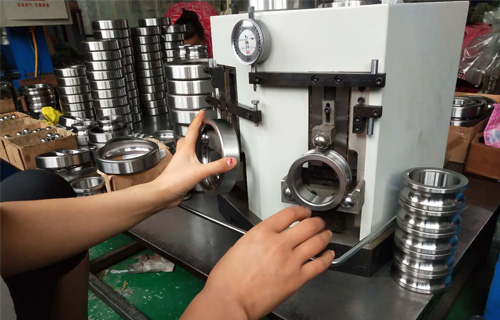
8 月 . 14, 2024 16:40 Back to list
Understanding Axial Load Capacity in Deep Groove Ball Bearings for Enhanced Performance and Durability
Understanding Deep Groove Ball Bearings and Their Capacity for Axial Load
Deep groove ball bearings (DGBBs) are one of the most widely used types of rolling bearings, primarily due to their versatility and ability to accommodate both radial and axial loads. These bearings consist of two rings, a cage, and balls that run smoothly between the rings, allowing for efficient motion. Understanding their capacity for axial load is critical in numerous applications ranging from automotive to industrial machinery.
Design and Functionality
The design of deep groove ball bearings features deep raceways in both the inner and outer rings. This design allows for angular misalignment between the shaft and housing, providing a degree of flexibility that is advantageous in various applications. The geometry of deep groove ball bearings enables them to support axial loads in both directions, making them ideal for applications that experience directional forces.
A crucial aspect of DGBBs is their ability to withstand large radial loads while also carrying axial loads. However, the axial load capacity of a deep groove ball bearing is often less compared to its radial load capacity. This capacity is determined by various factors, including the bearing's diameter, number of balls, material, and lubrication.
Calculating Axial Load Capacity
The axial load capacity of a deep groove ball bearing can be calculated using established formulas that take into account the bearing's dynamic and static load ratings. Dynamic load rating (C) represents the load under which the bearing can operate for a specified life (often 1 million revolutions), while static load rating (C0) reflects the maximum load the bearing can withstand without permanent deformation.
deep groove ball bearing axial load

The axial load rating (Fa) can be derived from bearing specifications found in standard charts provided by manufacturers. It is important to note that axially loaded DGBBs will experience reduced life if the load exceeds recommended limits. Engineers often use factors like the bearing's speed, temperature, and the environment in which it operates to make informed decisions regarding load application.
Applications and Considerations
Deep groove ball bearings are prevalent in applications ranging from electric motors, gearboxes, and pumps to household appliances. Their ability to handle both radial and axial loads makes them particularly suited for applications where space is limited but load capabilities are required.
However, it's essential to consider certain parameters when applying DGBBs in scenarios with significant axial loads. These include the selection of the appropriate bearing size and type, understanding the materials used (which impact thermal expansion and load endurance), and ensuring adequate lubrication for smooth operation.
Moreover, axial misalignment and thermal effects can influence bearing performance. Distortion in the bearing housing or shaft due to thermal expansion can pose challenges, leading to premature wear or failure if not adequately accounted for during design.
Conclusion
In summary, deep groove ball bearings are fantastic components engineered to manage both radial and axial loads effectively. With proper understanding and calculation of their axial load capacity, along with careful consideration of application specifics, engineers can leverage their strengths in various mechanical systems. Knowledge of DGBBs allows for improved design, enhanced performance, and ultimately, increased reliability in numerous industrial and commercial applications. When used correctly, deep groove ball bearings continue to be indispensable in the world of mechanical engineering, providing efficient solutions for load management.
Latest news
-
Unlocking Efficiency with Spherical Roller Bearings
NewsOct.29,2024
-
The Ultimate Guide to Thrust Ball Bearings
NewsOct.29,2024
-
The Power of Thrust Roller Bearings: Engineered for Excellence
NewsOct.29,2024
-
The Power of Deep Groove Ball Bearings for Your Application Needs!
NewsOct.29,2024
-
The Power and Performance of Cylindrical Roller Bearings
NewsOct.29,2024
-
High-Quality Ball Bearing Manufacturing Machines
NewsOct.29,2024
